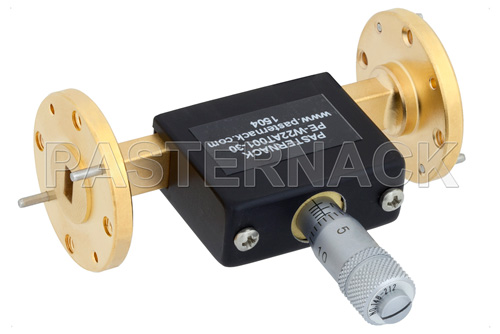By Mark Blackwood, Passive Components Product Manager at Pasternack
 Attenuators are an intrinsic part of many electrical designs, due to their utility in controlling amplitude and ability to improve the voltage standing wave ratio (VSWR) of a poorly matched load. Some applications include test setups that leverage fixed attenuators as protection before test equipment to stay within the dynamic range of the equipment. For example, a fixed attenuator can be used as padding for a power sensor and power meter from a high powered device under test (DUT). If the output power of the DUT is +36 dBm, it can push a power sensor far beyond its dynamic range and into compression, or even blow the power sensor. Placing a 20 dB fixed attenuator before the sensor helps to prevent this and allow for an accurate measurement of output power after calibration.
Attenuators are an intrinsic part of many electrical designs, due to their utility in controlling amplitude and ability to improve the voltage standing wave ratio (VSWR) of a poorly matched load. Some applications include test setups that leverage fixed attenuators as protection before test equipment to stay within the dynamic range of the equipment. For example, a fixed attenuator can be used as padding for a power sensor and power meter from a high powered device under test (DUT). If the output power of the DUT is +36 dBm, it can push a power sensor far beyond its dynamic range and into compression, or even blow the power sensor. Placing a 20 dB fixed attenuator before the sensor helps to prevent this and allow for an accurate measurement of output power after calibration.
A fixed attenuator can also minimize mismatch of a load. For instance, a power amplifier may be poorly matched to 50 ohms, and may cause an increase in reflections and loss of signal at the output; the VSWR is a measurement of these reflections. A fixed attenuator placed before the amplifier will increase the return loss by double the value of the attenuator, as the signal passes twice over the attenuator. This configuration will improve the VSWR, as return loss and VSWR are inversely proportional.
Programmable attenuators can be used in many applications that are controlled by a computer to maintain a particular insertion loss. The ability to control the gain of the system via computer makes these devices useful for analog transmission, automated test equipment, fading simulations and more. Variable attenuators and step attenuators are very similar to programmable attenuators, in that the user is able to select a particular attenuation. Variable and step attenuators are manually controlled and are therefore often convenient in lab scenarios and specialized test equipment that can be adjusted by an experienced engineer. Dc blocking attenuators are leveraged in test setups where isolation from dc may be necessary, or in any set ups where unwanted dc can flow into the system.

Leave a Reply
You must be logged in to post a comment.